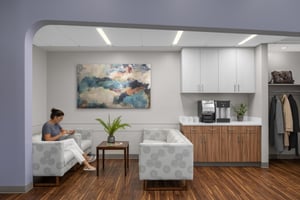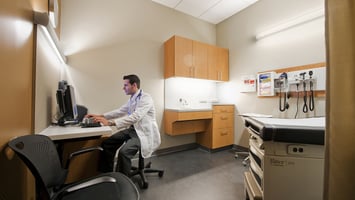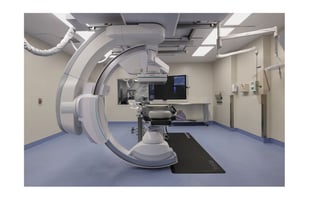Steve Jobs once said, "Start with the customer experience, then work back to the technology." This...
Designing for Independence: What Freedom Means in Ambulatory Care
As Americans celebrate independence this weekend with cookouts, fireworks, and family time, it’s worth asking what independence means in the world of healthcare design.
For patients, it might mean the ability to have surgery and go home the same day. For clinicians, it could mean working in a setting where workflows are optimized and ownership is within reach. For designers, it’s about creating buildings that give both groups more control over their environment and experience.
At its core, the rise of ambulatory surgery centers is a story about independence.
From Hospitals to Home: The Patient’s Path to Autonomy
Traditionally, surgery meant navigating the institutional complexity of a hospital: scheduling delays, overnight stays, disorienting environments. ASCs flipped that model. By focusing on efficiency, comfort, and specialty care, these facilities give patients the ability to undergo surgery and recover at home, often within hours. That is independence in its most human form.
But it is not just about same-day discharge. When we design ASCs well, we:
-
Right size facilities to provide essential functions and features
-
Streamline movement, optimizing staff and patient flow throughout
-
Create environments that feel intuitive and calming, not clinical
It is freedom from friction, both operational and emotional.
Design as a Tool for Clinical Empowerment
ASCs also represent independence for providers. Many are owned or co-owned by physicians. That means every design decision carries real financial, operational, and clinical weight. The building is not just a backdrop. It is a business.
We have seen design empower surgical independence when it:
-
Recognizes the needs of the surgeons and specialties specific to that facility
-
Optimizes throughput through efficient layout, proper equipment planning, and ample storage space
-
Balances technology requirements with smart, scalable infrastructure
The result is a facility that supports high-quality care without unnecessary cost or complexity.
Optimizing Design Through Regulatory Understanding
Ambulatory surgery centers are subject to a robust set of codes and regulations, just like hospitals. But knowing how to navigate those requirements thoughtfully can open up powerful design opportunities.
Rather than applying blanket standards, effective ASC design starts with a clear understanding of the facility’s Functional Program. This includes a detailed analysis of:
-
The levels of anesthesia used and how they impact recovery needs
-
The invasiveness of the procedures and associated infection control measures
-
The Risk Category of the facility, determined through tools like the ASHE Risk Assessment Tool
This approach does not mean cutting corners. It means tailoring the design to the actual needs of the procedures, the patients, and the staff. Achieving that level of precision requires diligent collaboration between the design team and the clinical team, starting early and continuing throughout the project.
In this way, understanding the regulations becomes its own form of independence. It gives owners and architects the ability to design smarter, deliver more, and create spaces that truly serve their purpose.
Designing for the Spirit of Independence
At AHD*lab, we believe design should always serve something larger than itself. On this holiday weekend, that means celebrating how thoughtful facility planning can advance personal freedom: giving patients a faster path home, giving clinicians a clearer voice in how they work, and giving design teams the insight to build with purpose.
This is what independence looks like in ambulatory care. And it is something worth celebrating.





